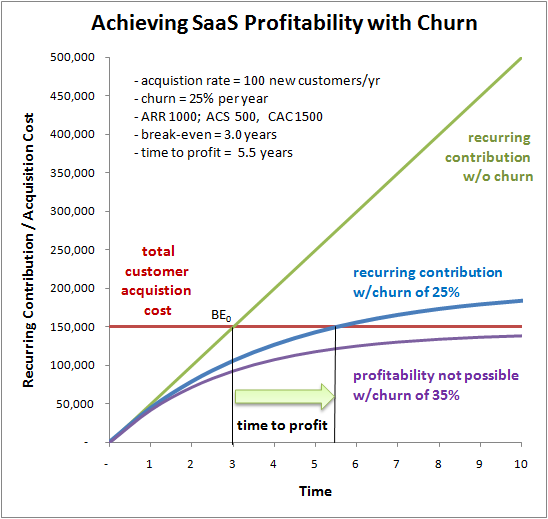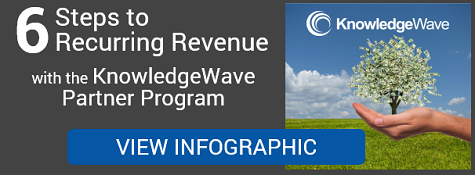 The world of VARs is rapidly changing. In the old days, you could get by selling hardware and software in one-off deals and by responding well to break-fix incidents (which really, are opportunities in this world).
The world of VARs is rapidly changing. In the old days, you could get by selling hardware and software in one-off deals and by responding well to break-fix incidents (which really, are opportunities in this world).
Now, brands are asking you to sell recurring revenue software, hardware and services that — while the total revenue for a deal could be higher than the original software license cost had been — the monthly revenue, and margins can be quite small. Also, competitors and customers are driving you to offer new services such as remote management that can be very price competitive and again, the revenue might come in much smaller increments than the deals you were used to.
Recurring revenue is great...but don't lose sight of profitability
The fact is that as VARs move to become MSPs, the economics of the business can change dramatically. Don’t get us wrong, recurring revenue is a great thing. It can make your business far more predictable, and with predictability comes fewer sleepless nights. However, it’s important to not confuse revenue and profitability. If you want to successfully evolve from a break/fix vendor to an MSP partner, you need to make sure that your business is profitable enough along the way to be sure that you survive the transition. This is what we mean by 'the care and feeding of a successful MSP business.'
Fortunately, due to the rapid growth of SaaS (Software as a Service) businesses, there are lots of smart people who are looking at how these recurring revenue models impact business results. One of these people is Joel York of the Chaotic Flow blog. Joe takes us through some great math to understand how key factors affect a recurring revenue businesses ability to thrive.
Key metrics to calculate or estimate
Numbers that you need to know about your MSP business, or at least closely estimate are:
- CAC - Customer Acquisition Cost. How much does it take you on average to win a new customer?
- ARR - Annual Recurring Revenue. How much will you invoice an average new customer in a year?
- ACS - Average Cost of Service. What is it going to cost you to service that customer for the same year?
- CCR - Customer Churn Rate. What percentage of customers do you lose in a year?
Some simple math tells us that for a single customer, BE or Break Even Point is when your ARR is equal to your cost to acquire that customer plus your cost of servicing that customer. It’s important to note that a factor not included in this equation is Customer Churn Rate.
BE = CAC ÷ [ ARR – ACS ]
Beyond breaking even
Knowing when a customer moves from Break Even to contributing to company profitability will help you to understand how long you will need to support your new Recurring Revenue streams until they begin to generate cash.
Introducing a churn rate into the equation dramatically changes the outcome. If you are churning customers, you are not recovering your CAC (Customer Acquisition Costs) as you need to be in order to be a profitable business. You can see the potential impact of churn on your business here:
Image credited to: http://chaotic-flow.com/saas-profitability-saas-company-is-as-saas-customer-does/
So a major factor in your success as a recurring revenue business, and even your ability to survive the evolution process from VAR to MSP is your Customer Churn Rate.
Customer loyalty is the antidote to churn
Let’s say that you have a well-established lead generation and sales process that you feel is efficient and effective. If that’s the case, then your CAC is relatively fixed. It’s probably also a safe bet that your cost to service a customer with a defined set of services is relatively fixed as well. This means that the two factors that you can really control that affect the success of your business are ARR from each customer and your Customer Churn Rate.
We believe that this is a hugely important concept for growing MSPs to understand. In order to outlast your competition, you need to maximize the value of each customer to your business. This means that you need a set of interrelated products and solutions that are natural fits to one another and ideally can be bundled, or at least that create easy steps for you to upsell the relationships that you are investing in obtaining. Even better if these products and services interrelate in ways that will tend to reduce churn.
Availability of training reduces churn
One of the key factors that reduces the successful adoption of new software is the lack of training. As you introduce licensed SaaS software solutions, such as Office 365, if the roll-out is painful for your customer, and employees resist adoption, then your new relationship is at risk of churn. Too much churn, and your business fails.
That’s why KnowledgeWave created effective, affordable Office 365 training solutions for MSPs. KnowledgeWave's end user software training helps you to ensure that your customer comfortably adopts the new software that you are bringing to them. This minimizes churn. Reselling online training also provides an additional recurring revenue stream potential from each of your customers.
We believe that working with KnowledgeWave is one of the surest ways to gain control over churn, and feed and care for your MSP business successfully into the future!








